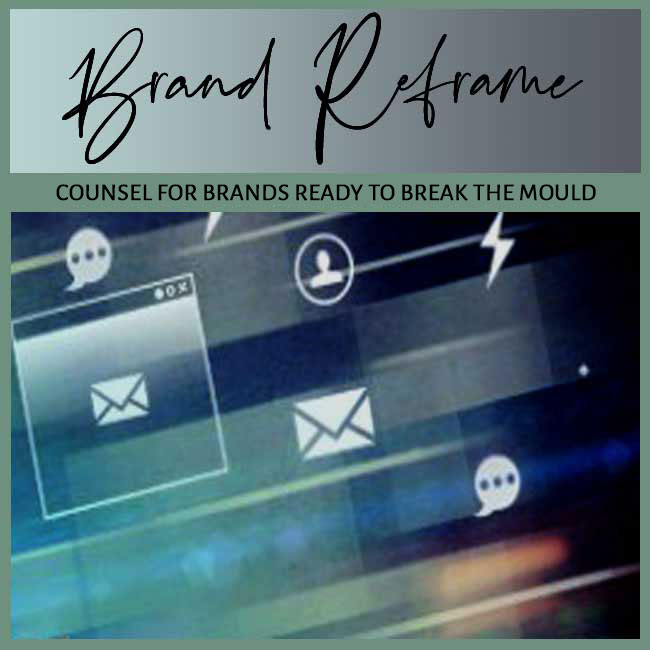
BRAND LAUNCH FAILURE | AUDIENCE: INVESTORS IN SLUGGISH BRANDS
BY: SHOBHA PONNAPPA | BRAND BREAKTHROUGH STRATEGIST | 45 YEARS | 125+ CLIENTS
I answer 6 tough questions about how too grand vision statements can drown out clarity, stall traction, and weaken brand momentum.
I’ve seen it happen in many early-stage brands … founders have strong ideals, big missions, and beautiful language to back it up. But somewhere between the vision deck and the homepage copy, things start slipping. The message becomes foggy. Buyers don’t see themselves in the promise. Internal teams don’t know how to act on it. In this post, I unpack the six questions I get most about brands that lose traction because their grand vision never lands with clarity.
Startups are often built around ideals … not yet around real-world traction. That’s natural. Founders need belief to sustain them through uncertainty. But when belief is presented as branding, without proof or proximity to the buyer’s reality, it alienates rather than inspires. The vision feels self-referential, not service-driven.
In early launch phases, brands need relevance, not rhetoric. A strong vision should be a backdrop … not the headline … until the product has earned space in the customer’s life. Otherwise, the brand sounds like it’s trying to lead a movement that no one signed up for.
A strong vision moves you toward clarity. Brand static muddies the signal. When a vision statement is lofty but vague … “we exist to transform the future of human connection” … it sounds impressive but says little. It doesn’t help buyers make decisions. It doesn’t show up in the brand’s daily choices. And it rarely leads to traction.
Static creeps in when vision replaces communication. Instead of crisp messaging around product use, differentiation, or buyer benefit, brands flood their pages with big claims and lofty tone. The result? A brand that feels important to itself, but indecipherable to others.
It delays trust. Buyers want to know what you do, why it’s useful, and how it fits into their life. When that clarity is missing, interest dies at the landing page. No matter how powerful your backstory or ambition, buyers only engage when they feel seen … not sold to.
Internally, a vague vision slows execution. Product teams don’t know what features to prioritise. Sales teams don’t know how to pitch. Marketing teams don’t know what problem to lead with. A fuzzy vision leads to internal fragmentation.
Many investors are drawn to founders with bold articulation … it signals ambition. But boldness without usability eventually backfires. When the vision is so elevated that it loses grip on the market’s real tension, the brand becomes a storytelling exercise, not a scaling opportunity.
Sometimes investors hesitate to intervene early on branding … they assume it’ll resolve itself as the product grows. But in truth, early brand signals often harden into default positioning. By the time the problem is clear, it’s expensive to undo.
Yes … but only if it’s used as internal orientation, not external messaging. Let your big vision inform decisions, culture, and investor conversations. But translate it into concrete benefits, relatable messages, and specific proof for buyers.
A grand vision isn’t the enemy … vagueness is. The best founders keep the poetry in the backroom and bring precision to the front. They convert belief into focus, and story into traction. That balance wins trust faster than lofty words.
Lead with value. Articulate a pain point you solve, a delight you enable, or a transformation you catalyse. Make the buyer the protagonist … not the brand. Let your vision appear subtly through consistency, decision-making, and how you prioritise. Let people discover your beliefs by experiencing their benefit.
Instead of declaring a movement, show momentum. People don’t need a manifesto … they need a map. When your early brand message becomes a tool for navigation, it builds both meaning and movement. And that’s what creates real momentum.
If these questions sound familiar, your brand may not lack ambition … but it may lack clarity. And clarity is what powers traction. Revisiting how you use your vision isn’t a compromise … it’s a strategic shift toward growth. Your vision should energise action, not obscure it.
If you’re brand owner or manager seeking stronger brand performance, this FAQ Insight Post I wrote could interest you: “FAQs: The Risk of Muddled Brand Storylines That Don’t Add Up.“
And if you’re a solo expert looking to sharpen traction, this FAQ Insight Post I worked on may resonate: “FAQs: Why Even Brilliant Experts Brand Themselves into Boxes.“

"One BIG IDEA can turn brand stagnation into unstoppable movement. Spots are limited each week ... book your breakthrough session now."
Shobha Ponnappa
More Breakthrough Ideas … Case Studies & FAQs … from the Brand Launch Failure Category
Case Studies
FAQ Insights
Smart insights, real-world frameworks, and idea-driven clarity – designed to help brands move.
Get my fortnightly Brand Reframe newsletter. Smart insights, distilled thinking, and focused momentum to help your brand lead.

Get my free AI strategy guide. Smart prompts, sharper briefs, and practical ways to make AI support your brand momentum.

Just fill in the form to join. Get my newsletter and the guide shown alongside, all with several game-changing tips.